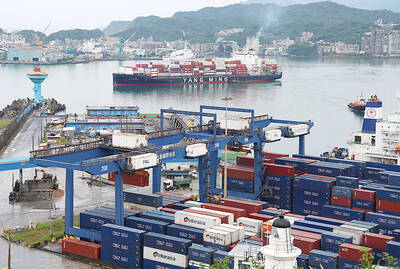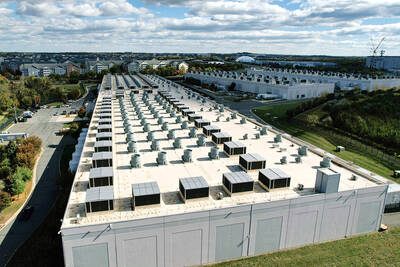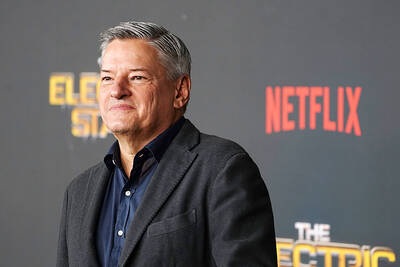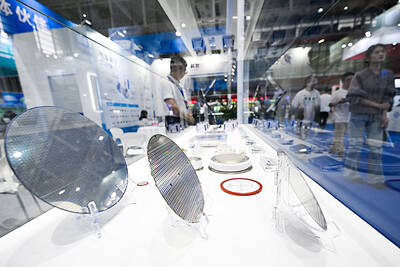Procter & Gamble Co (P&G) plans to remove its batteries and make Duracell a stand-alone company.
The world’s largest consumer products maker, which acquired Duracell in 2005, has been trimming its product lineup to focus on its top performers.
After it finishes jettisoning more than half its brands around the globe over the next year or two, P&G said it is set to be left with about 70 to 80 brands.
If a split-off of Duracell occurs, P&G said its shareholders would have the option of exchanging some, none or all of their P&G shares for shares of the new Duracell company.
P&G chief financial officer Jon Moeller during a call with reporters said that Duracell is an “attractive” business that generates about US$2 billion a year in sales.
P&G on Friday said that it would prefer a spin-off of Duracell, but that it is considering a sale or other options for Duracell.
The decision to sell or discontinue 90 to 100 brands comes as P&G fights to boost sluggish sales.
In the latest quarter, the company said sales volume fell in its beauty, hair and personal care unit.
Under pressure to boost its performance, the company brought back A.G. Lafley as its chief executive officer last year.
Lafley said the firm’s expansive portfolio is the result of a natural evolution of multinational companies, which have a tendency to create or acquire brands over time.
However, P&G had already been trying to slim down in recent years,
P&G said it now expects sales next year to be flat to up to low-single digits — it previously forecast growth in the low single digits.
It stood by its guidance for core earnings per share to grow in the mid-single-digit range.
For the quarter ending Sept. 30, it earned US$1.99 billion, or US$0.69 per share.
Not including one-time items, it earned US$1.07 per share, which matched the consensus of analysts surveyed by FactSet.
Revenue slipped to US$20.79 billion — analysts polled by FactSet expected US$20.76 billion.

Taiwan’s exports soared 56 percent year-on-year to an all-time high of US$64.05 billion last month, propelled by surging global demand for artificial intelligence (AI), high-performance computing and cloud service infrastructure, the Ministry of Finance said yesterday. Department of Statistics Director-General Beatrice Tsai (蔡美娜) called the figure an unexpected upside surprise, citing a wave of technology orders from overseas customers alongside the usual year-end shopping season for technology products. Growth is likely to remain strong this month, she said, projecting a 40 percent to 45 percent expansion on an annual basis. The outperformance could prompt the Directorate-General of Budget, Accounting and

The demise of the coal industry left the US’ Appalachian region in tatters, with lost jobs, spoiled water and countless kilometers of abandoned underground mines. Now entrepreneurs are eyeing the rural region with ambitious visions to rebuild its economy by converting old mines into solar power systems and data centers that could help fuel the increasing power demands of the artificial intelligence (AI) boom. One such project is underway by a non-profit team calling itself Energy DELTA (Discovery, Education, Learning and Technology Accelerator) Lab, which is looking to develop energy sources on about 26,305 hectares of old coal land in

Netflix on Friday faced fierce criticism over its blockbuster deal to acquire Warner Bros Discovery. The streaming giant is already viewed as a pariah in some Hollywood circles, largely due to its reluctance to release content in theaters and its disruption of traditional industry practices. As Netflix emerged as the likely winning bidder for Warner Bros — the studio behind Casablanca, the Harry Potter movies and Friends — Hollywood’s elite launched an aggressive campaign against the acquisition. Titanic director James Cameron called the buyout a “disaster,” while a group of prominent producers are lobbying US Congress to oppose the deal,

Two Chinese chipmakers are attracting strong retail investor demand, buoyed by industry peer Moore Threads Technology Co’s (摩爾線程) stellar debut. The retail portion of MetaX Integrated Circuits (Shanghai) Co’s (上海沐曦) upcoming initial public offering (IPO) was 2,986 times oversubscribed on Friday, according to a filing. Meanwhile, Beijing Onmicro Electronics Co (北京昂瑞微), which makes radio frequency chips, was 2,899 times oversubscribed on Friday, its filing showed. The bids coincided with Moore Threads’ trading debut, which surged 425 percent on Friday after raising 8 billion yuan (US$1.13 billion) on bets that the company could emerge as a viable local competitor to Nvidia